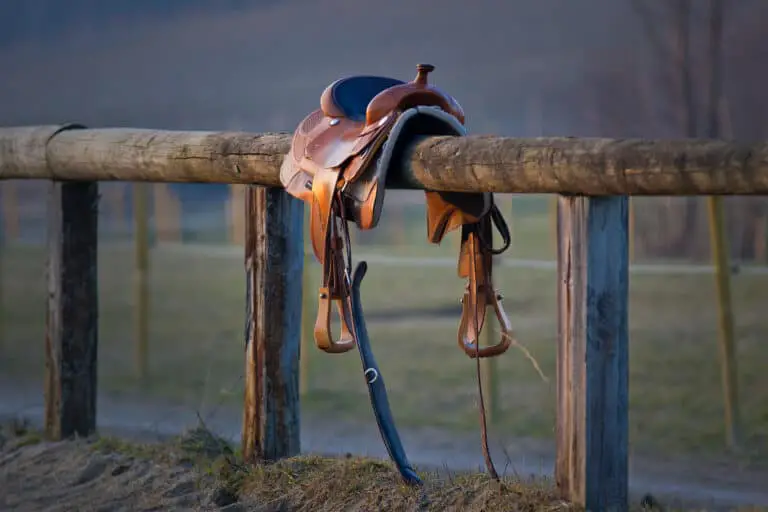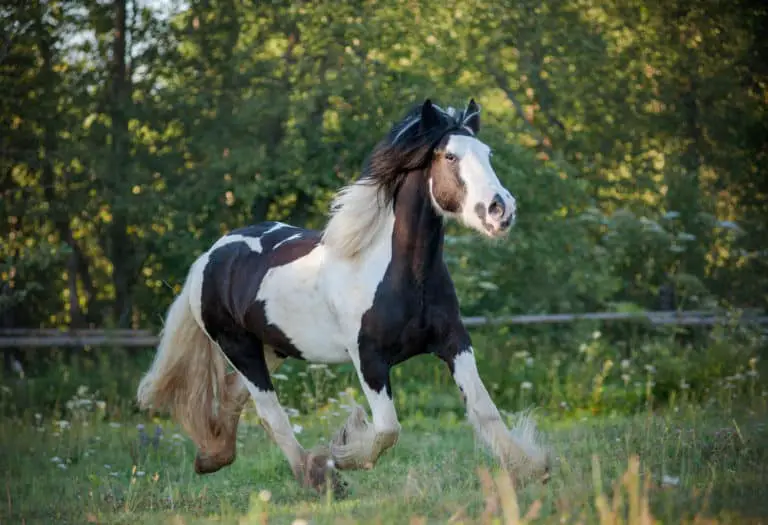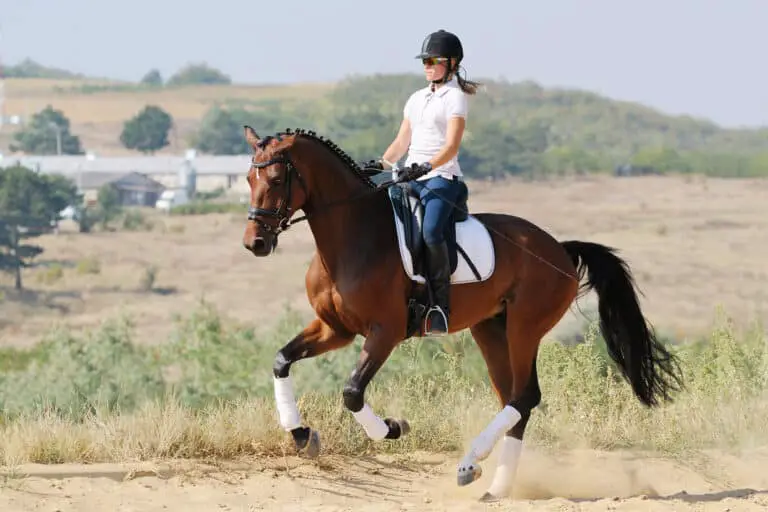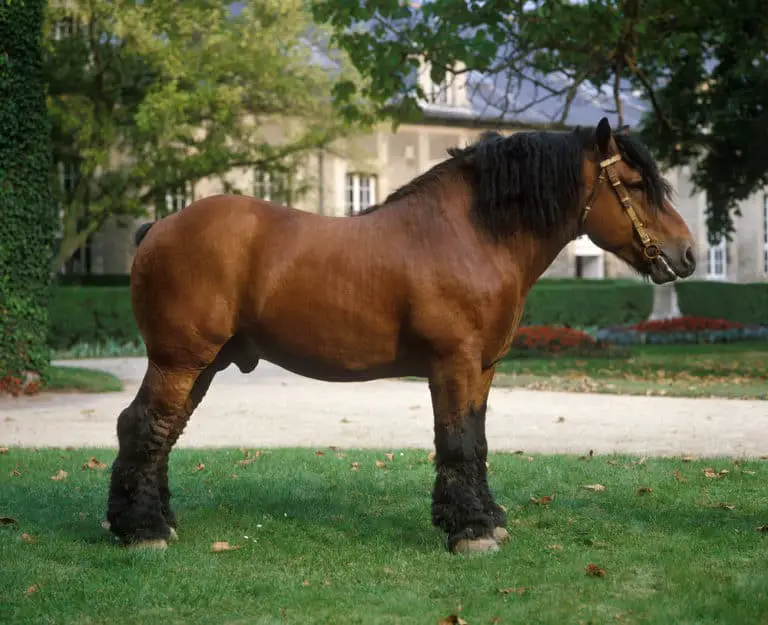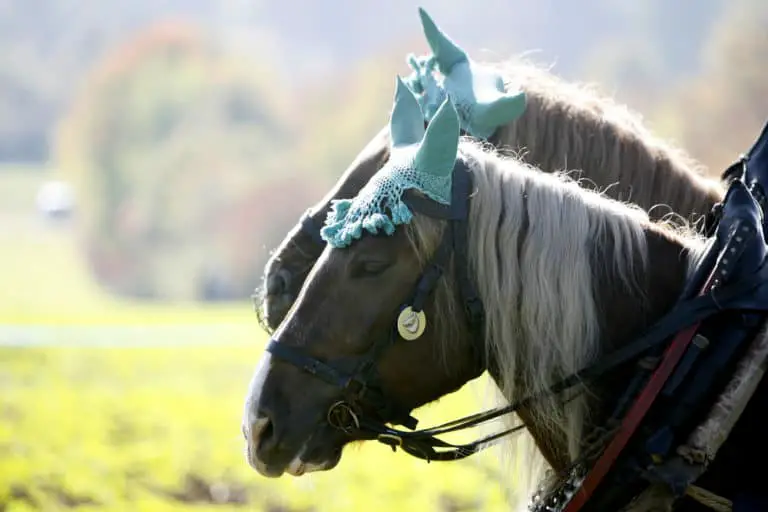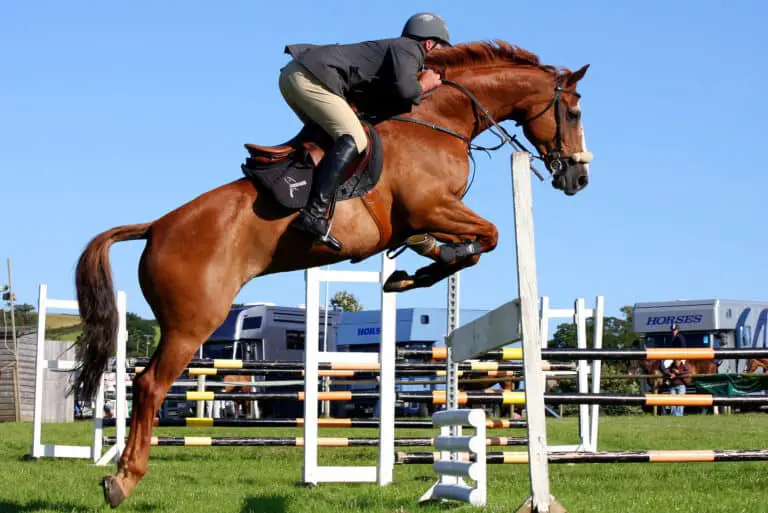Andalusian Horse Breed: Care, Cost & History (2025)
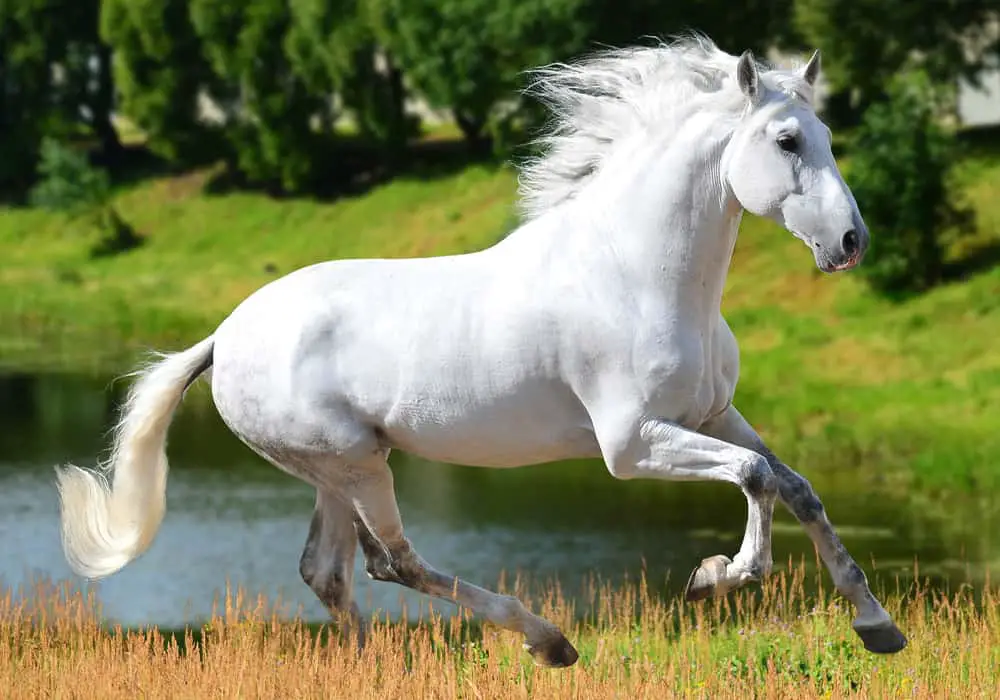
The Andalusian horse was a status symbol among the elite classes of Spain, ridden by royalty and the preferred mount of warriors.
Carthusian Monks on the Iberian Peninsula helped form the breed.
The breed had its share of challenges, and almost went extinct, but thrives today because of its stunning beauty, fluid and flowing gaits, and kind personality.
Breed: Andalusian horse
Adult Weight: 900-1,100 pounds
Adult Height: 15.2-16.2 hands (62-66 inches)
Origin: Spain and the Iberian Peninsula
Use: Dressage, pleasure riding, trail, shows, and other disciplines
Colors: Gray and bay are most common, they can be all colors.
Features: Strong, muscular body, elegant appearance with copious mane and tail
Lifespan: 25 years
Character: Kind and intelligent, they love people
Gait: Lively, animated, and smooth
Best for: All levels of riders, including Olympians
- Characteristics
- Andalusian Care
- Andalusian History
- Modern Andalusian
- Cost and Ownership
- Buying an Andalusian
- Similar Breeds
Andalusian Horse Characteristics
Andalusian horses are strikingly beautiful. The Andalusian horse head has large, intelligent eyes. Their neck arches into a sloped shoulder, with straight legs, and muscular hindquarters.
They have thick, flowing manes and tails, but no leg feathers. Andalusian horse characteristics are defined by their rounded neck, shoulder, and hindquarters that create the baroque image the breed is associated with.
Size
The breed registry has strict rules about Andalusian size. Mares must be 14.3 hands or taller. Stallions and the Andalusian gelding are 15 hands or taller. (1) Shorter horses cannot be registered.
Andalusian horse height is consistent throughout history, and the height requirement is one way that the registry maintains the integrity of the breed.
Most Andalusians are between 15.2 and 16.2 hands tall. The breed is taller than some because they were originally bred to carry knights in armor.
This extra height in Andalusians was used to help create Warmbloods as well. Andalusian foals are born with long legs and slowly reach a mature size.
Weight
Andalusian horse weight averages 1,100 pounds for stallions and geldings, with mares weighing closer to 900 pounds. The horse’s weight is consistent and proportionate to its height because of the breed regulations in place.
The Andaluz horse has a solid bone structure, meaning they have big bones that can support this weight and that of a rider – remember, they used to carry knights wearing heavy armor.
The Andalusian is an elegant horse despite the larger bone structure with the weight evenly distributed throughout their bodies. Young horses carry their weight evenly as well, appearing as miniature versions of the adult horse.
Colors
Gray and bay are the most common Andalusian horse colors, but all those that we see in horses are acceptable. In fact, there can be spotted coat patterns and rare Andalusian horse colors like buckskin and cremello.
The registry is based on conformation, not color, therefore these rare colors are a genetic bonus, and not actively bred for.
Andalusians can have white markings, and this is where we see the spotted coat patterns as well, in part because of the genes that allow for gray horses.
The beautiful Andalusian horse is easily recognized in any color, but 80% of all horses are some shades of gray or white.
Temperament
The Andalusian horse temperament is kind and docile, yet proud. Thousands of years of breeding for warfare and extreme situations necessitated a cool-headed horse. However, nobility, knights, and everyone else also wanted an attractive horse.
Andalusian horse behavior is the perfect blend of the distinguished, proud demeanor with the quiet and calm approach to life. Moreover, they love to learn and do so quickly, making them easy to train and adaptable to all situations.
People love riding Andalusian horses because they are so kind and intelligent. The United States Equestrian Federation division rules state that children can exhibit stallions, except for in walk trot and junior exhibitor showmanship classes. (2)
Andalusian Horse Care
The temperament of the Andalusian and years of careful breeding make them a relatively easy horse to care for.
They have diet, nutrition, and health requirements; if these are met, horse care is easy.
Horse owners become attached to their animals, and luckily, the Andalusian horse lifespan is longer, at about 25 years.
Diet and Nutrition
Forage, in the form of grass and quality hay, should comprise the majority of an Andalusian diet. (3) These horses are generally easy keepers, and that means they will gain weight quickly with high-quality forage. (4)
Most mature Andalusians need minimal amounts of grain; foals, young horses, those in heavy work, and senior horses will have different nutritional requirements. (3)
Andalusians should be fed low sugar and low starch grains. (3) However, even those horses on a mostly forage diet still need vitamins and minerals and should receive a ration balancer. (4)
All horses should have continuous access to fresh, clean water and a salt block. (3)
Health Problems
One of the primary health problems that Andalusians have is related to their diet and nutrition. They are susceptible to metabolic disorders (4), therefore, it’s important to manage their weight by keeping them active, not overfeed, and select low sugar or low starch products. (3)
Laminitis is a secondary effect and can also be caused by other health problems. (5, 11) Andalusians are susceptible to ischaemic disease and stallions have a higher prevalence of inguinal hernias. (5, 11)
Horses from the Carthusian line, especially those tracing back to the stallion Esclavo, have warts under their tail, and sometimes bumps behind their ears that resemble horns.
Neither of these characteristics are considered genetic problems. (6)
Grooming
Andalusian horses need to be groomed every day to keep their coat healthy and with a good shine. Hooves also need to be cleaned daily. (5, 11) Grooming and cleaning hooves also provide an opportunity to check the horse over and make sure there are no injuries.
One of the main components of Andalusian grooming is caring for their long, thick manes and tails. (7)
The mane and tail require consistent grooming that begins with cleaning and conditioning, natural products promote healthier hair. (7)
Many Andalusian horse owners braid their horses to minimize the number of hairs that break. (7)
Andalusian Horse History
Andalusian horse history is closely tied to the Lusitano horse and the history of Spain. The horses are referred to by many names, including the Iberian horse and the Pure Spanish Horse.
Andalusians became connected with Spain’s royal family and nobility in the Middle Ages and were used to influence other breeds of horses, such as the Lipizzaner.
Origin
The horses roaming the Iberian Peninsula 25,000 years ago stayed in the area, and the Carthusian Monks, as well as others, began breeding them in the Middle Ages.
Soon, a distinct look and type developed, Iberian horses, what we know of today as the Andalusian and Lusitano horses.
Andalusian horses were used in the fields and as transportation, but as the breed continued, they became associated with royalty.
Their uses changed to bullfighting, war horses, and high school dressage horses.
The Andalusian horse origin owes much of its current bloodlines and reverence to its status symbol as the horse of kings.
Historic Development
For much of the Middle Ages and Renaissance, the Andalusian horse breed was protected by the Carthusian Monks, the church, and the royal families that bred them. However, the breed faced many threats in the 19th and 20th centuries and almost went extinct.
Horses were stolen, the church weakened, royal families lost power, they were replaced as war horses, and then a virus destroyed equine populations in Spain, killing off many Andalusians.
Surviving horses were exported to improve other breeds. Luckily, the registry put strict guidelines in place to protect the pure Spanish breed and only allowed exports again once the population stabilized.
Notable Andalusian Horses
Famous Andalusian horses include war horses, dressage superstars, and movie stars.
In fact, the Andalusian horse pedigree has lent them a place among history’s great, with statues, art, poetry, and movies commemorating their beauty.
Movie stars from Clint Eastwood to Russell Crowe have selected the Andalusian, and they continue gaining prominence on the dressage scene.
Babieca
Babieca was the horse of Rodrigo Díaz de Vivar, or El Cid (1043 to 1099). Babieca was a gray colt when El Cid, then a boy, chose him. Together, they became fierce warriors; Babieca carried El Cid into battle for 30 years, saving Spain. The horse and man both have tombs and bronze statues memorializing them.
Evento
Evento is a gray Andalusian dressage horse that was ridden by Ingnacio Rambla Algarin in dressage at the 1996 Olympics in Atlanta. They represented Spain and finished 11th individually, catapulting the breed’s popularity in the dressage world. He helped launch dressage in Spain, and his son, Distuinguido, carried on that tradition.
Florian
The Andalusian named Florian played the role of Asfaloth in the Lord of the Rings trilogy. Florian was ridden by Arwen in the movie. Liv Tyler’s stunt double, Jane, loved Florian, and Viggo Mortenson purchased the horse for her. Two other Andalusians, Demero and Blanco, played Gandalf’s horse in the trilogy.
Myths and Legends
A history connected to wars and royalty is steeped with Andalusian horse legends. Their mythical appearance, home in the Royal Stables, and use in bullfighting and wars has made them part of the fabric of Spain’s history and equestrian legend. While some myths are part of an individual family’s history, many impacts the entire breed.
The Original War Horse
Steven Spielberg made war horses famous with his movie, but the Andalusian was the original warhorse. William the Conqueror, El Cid, and Hannibal all rode the Andalusian warhorse. Their popularity as war horses led to them becoming a status symbol and the founding of the Royal Stables of Cordoba in 1567 by King Philip II.
El Cid Was Dead During his Last Battle with Babieca
Babieca was a fearless Spanish warhorse, and legend has it El Cid was dead during their last battle. El Cid died in battle, but his troops knew the enemy would be braver if they didn’t see El Cid. They put his armor back on and placed him on Babieca. His Andaluz caballo led the troops into battle, saving Valencia.
Napoleon Stole the Breed
Unfortunately, there is truth to the legend that Napoleon stole the Andalusian breed. He and the French army invaded Spain during the Napoleonic wars and stole many of the horses and took them back to France. One of the reasons that the breed survived is because a herd was hidden and later used to restart the breed.
Modern Andalusian Horses
Luckily, the last 50 years were kinder to the Andalusian horse, and the breed is on a firm footing. Today, the Cría Caballar de las Fuerzas Armadas maintains the studbook.
There are different types of Andalusian horses with the Carthusian being closest to the original horses. All are popular with equestrians worldwide for their athleticism, temperament, and stylish good looks.
Breeding
Naturally, Andalusian breeding is most prevalent in Spain and Europe. However, they have gained popularity throughout the world and can be found with breeders worldwide, and participating in all sorts of disciplines, especially as dressage horses.
One of the most popular types of Andalusian horse Is the Carthusian strain, descended from the original horses bred by the monks.
Most horses in this strain trace back to the Andalusian stallion Esclavo, and have unique characteristics not found in other strains.
The Australian breed organization maintains their Andalusian horses breeding program with the same rules used in Spain. The International Andalusian and Lusitano Horse Association has its headquarters in the United States.
Population
Although once threatened and near extinction, the Andalusian horse population rebounded but is still rare. The most recent threat came during the Spanish Revolution of 1936 when nearly all the horses were killed.
The Spanish government saved the breed by stopping all exports until the population had recovered; exports started again in 1960. Today, there are 60,000 registered Andalusians worldwide, and 11,000 of those are in the United States, plus there are 9,500 half-Andalusians. (2, 9)
Many dedicated breeders continue building the population and steadily increasing horse numbers. There are also half-Andalusians, with mares bred to Andalusian stallions. Since they are rare, breeders carefully select homes for their horses to protect their future.
Uses
The Andalusian is a versatile breed, and although they may be best known in the dressage arena, excel at many disciplines. Andalusian horse uses include western and English riding, trail, jumping, driving, working cattle, and parade.
Their prowess in the dressage arena is well documented; they are considered one of the classical horse choices that compete at the highest levels. Andalusians are particularly suited to the upper-level movements of high school dressage.
The Andalusian horse gait is active with a discernible cadence. They have impulsion in all gaits, with elevated leg action, but can also extend their gaits. Andalusian horse speed is fast – up to 55 mph, but smooth.
Andalusian Horse Prices
The cost of owning a horse begins with the purchase price, and then includes the annual upkeep of the animal, the board, feed, and health care.
The Andalusian horse price is high because they are a rare breed. Expect a significant purchase price followed by annual care of the horse.
Purchase Price
The purchase price of an Andalusian horse ranges from $3,000 to $60,000, depending on the horse. (10) Factors influencing the horse include bloodlines; a horse with rare Carthusian breeding will naturally cost more.
Those that exhibit the highest breed characteristics and ideal conformation also cost the most. Dressage horses cost more since they are the original dressage horse. Andalusian horse training is another factor that influences the price, trained horses cost more.
The athletic ability and age of the horse also influence the price. Horses purchased in Spain may cost less because there are more Andalusians in the area to choose from. However, in areas with limited Andalusian populations, the price will be higher.
Ownership Costs
Owning and riding an Andalusian horse is a dream, but all dreams come with a cost. The Andalusian horse cost of ownership is between $1,770 and $12,930 each year. (8)
The Andalusian price is the starting point, and then their feed, board, and care contribute the same way humans have living expenses.
Board
Board is the equivalent of rent or a mortgage. It covers the shelter the horse needs. Andalusian horse board cost is between $1,200 and $7,200 annually, depending on the geographic location and type of board, either a run-in shelter in a field or a luxurious heated barn with an attached indoor arena. (8)
Feed
The primary Andalusian horse feed cost is forage, in the form of hay and grass. Geographic location will dictate how much grass is available, but Andalusian owners need to be careful, too much grass increases metabolic issues. Grain and supplements also contribute to costs. Expect to pay between $250 to $4,380 annually. (8)
Vet Care
Andalusian horse veterinary cost is an annual expense and includes deworming, vaccinations, dental care, and regular checkups. The cost averages between $200 and $350 annually. Any emergency care, such as colic or injury, can add an extra $500 to $1,000 to this cost. (8) Proper veterinary care each year is essential to the animal’s health and longevity.
Hoof Care
Horses’ hooves grow the same way humans’ fingers and toenails do, and therefore need continuous maintenance. Hooves should be trimmed every six to eight weeks by a farrier. Some horses also require shoes. Andalusian horse hoof care cost averages between $120 and $1,000 each year, depending on shoeing needs and the visit interval. (8)
Buying an Andalusian Horse
Owning a horse is a lifelong dream, and the Andalusian breed is popular because of its elegance and kindness.
Do your homework before buying a horse, ask questions, try out several different horses, and have a veterinarian check the horse before the sale is complete.
These steps ensure the horse is the best fit for your goals and dreams.
Is the Andalusian Horse Right for You?
Riding an Andalusian horse is like floating on a cloud. If you are looking for a horse that is athletic, kind, smart, and loves people, then owning an Andalusian is the right choice.
These horses have qualities that make them ideal in many horse ownership situations, from upper-level dressage horses to recreational trail mount.
It’s important to select a horse that matches the goals of the rider. The breed is a great choice for beginners or advanced riders as they are kind and gentle when needed but can also increase their scope and performance as the rider learns.
Their smooth gaits help riders build confidence as well.
How to Buy an Andalusian Horse?
It can be a bit challenging to buy an Andalusian because the breed is rare. Start by identifying an Andalusian breeder, or several in your geographic region.
They can provide information on bloodlines and available horses and may have some horses for sale themselves. Remember that you want to look at multiple horses for sale before deciding.
Breeders may also let you come visit and meet their horses, helping you learn more about their temperament and the possibilities.
Buying an Andalusian horse fulfills a dream and the horse becomes your partner; take your time to find the best horse possible and you will not be disappointed.
Similar Breeds to Andalusian
Several breeds are similar to the Andalusians because of their shared bloodlines and characteristics.
The Lusitano and Andalusian shared a registry for generation, therefore, it is the closest of the Andalusian breed alternatives.
The Arabian horse was crossed with Andalusians in the 1800s, and Andalusians were used to help form the Lipizzaner breed.
Lusitano
The Lusitano was also bred on the Iberian Peninsula and the breed is intricately connected to the Andalusian. The two breeds shared a studbook for many years until the Andalusians separated. Lusitano breeding is centralized in Portugal and they’re popular for many of the same reasons as the Andalusian. Today, the breeds remain distinct.
Arabian
Andalusian breeders used Arabians in the 1800s to improve their bloodlines and the endurance and beauty of their horses. Arabian horses also have ancient bloodlines, and although smaller than the Andalusian, are elegant, highly athletic, and charismatic. Arabian horses can have a higher energy level than the Andalusian and add more pizazz to the ride.
Lipizzaner
The Andalusians were a founding bloodline in the Lipizzaner breed. These horses are also sturdy and muscular horses, with large, kind eyes, and arched necks. Lipizzaner horses are renowned for their high school dressage at the Spanish Riding School in Vienna. The school is named for the Spanish horses – the Andalusian and Lusitano – that helped form the Lipizzaner breed.
FAQ
What is an Andalusian horse?
An Andalusian, or Pure Spanish Horse, is a horse bred on the Iberian Peninsula in Spain and was used by nobility and warriors.
What does an Andalusian horse look like?
The Andalusian horse is tall and elegant, with a luscious mane and tail, arched neck, and strong hindquarters. Most are gray.
How did the Andalusian horse get its name?
The name Andalusian comes from the Andalusia province of Spain, where they were bred.
Can you ride an Andalusian horse?
Yes, you can ride an Andalusian horse, they were once the preferred riding horse of Spanish kings and royalty.
Are Andalusian horses good for beginners?
Andalusians are good horses for beginners, intermediate, and advanced riders.
How tall is an Andalusian horse?
Andalusians are usually between 15.2 and 16.2 hands, or 62 and 66 inches tall.
How much does an Andalusian horse weigh?
Mature mares weigh around 900 pounds while the stallions and geldings weigh 1,100 pounds.
How big is an Andalusian horse?
Andalusian horses are an average size, usually around 15.2 hands and 1,000 pounds, but appear bigger because of their distinguished appearance.
How much does an Andalusian horse cost?
The purchase price of an Andalusian horse is between $3,000 and $60,000.
How much does Andalusian horse ownership cost?
Andalusian horse ownership costs from $1,770 to $12,930 each year.
How long do Andalusian horses live?
The lifespan of an Andalusian horse is around 25 years.
How fast can an Andalusian horse run?
Andalusians are very fast and can run up to 55 mph.
How much can an Andalusian horse pull?
Andalusian horses can pull between 1,350 and 1,650 pounds.
How much can an Andalusian horse carry?
Andalusian horses can carry between 180 and 220 pounds.
At what age is an Andalusian horse full grown?
Most Andalusians are full-grown at age five.
What are Andalusian horses used for?
Andalusian horses are used for driving and riding, from dressage to working cattle.
References
- U.S. P.R.E Association. 2022. The Pre Horse. Link
- U.S. Equestrian Federation. 2022. Andalusian/Lusitano. Link
- Andalusian World. 2022. They Are What They Eat: Understanding Horse Nutrition. Link
- Kentucky Equine Research. 2022. Answer Exchange. Link
- Christa Lesté-Lasserre, MA, The Horse. 2019. Improving Genetic Diversity in PRE Horses. Link
- Horse Canada. 2022. Andalusian. Link
- U.S. Equestrian Federation. 2019. Pro Tip: Mane and Tail Care. Link
- Arabian Horse Association. 2022. What is the Cost of Providing for Them? Link
- International Andalusian & Lusitano Horse Association. 2022. The Original Dressage Horse. Link
- Andalusian World. 2022. Sales Horses. Link
- Andalusian World. 2022. Managing Equine Metabolic Syndrome: Medicine meets Farriery. Link

